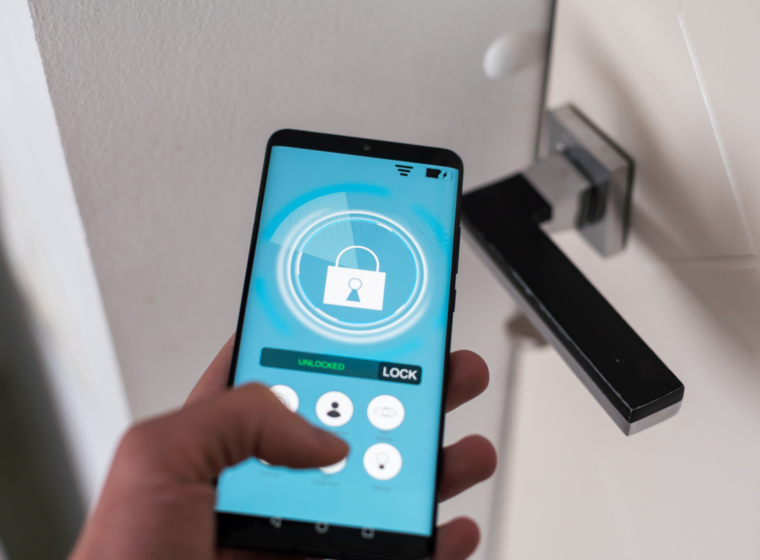For hotel management teams and hospitality leaders, benchmarking in the hotel industry and hotel benchmarking metrics serve as a compass, guiding decision-making and strategic planning. By comparing performance against similar properties or industry leaders, hotels and hospitality businesses can identify best practices, set realistic goals, and develop targeted strategies to improve their operations and guest experiences.
How Hospitality Benchmarking Gives Businesses an Edge
The importance of benchmarking in the hotel industry cannot be overstated. It provides a clear picture of where a hotel stands in the market, helping managers to:
- Identify areas of competitive advantage
- Pinpoint opportunities for improvement
- Set realistic performance targets
- Allocate resources more effectively
- Track progress over time
In today’s highly competitive hospitality landscape, benchmarking extends well beyond simple financial comparisons. Modern hotel benchmarking practices encompass a range of metrics — including guest satisfaction ratings, online reputation, operational efficiency, and even sustainability efforts. This comprehensive approach allows hotels to gain a holistic view of their performance and make data-driven decisions to stay ahead in the market.
However, identifying the most valuable KPIs and knowing how to track them can be a challenge for hotels. Read on to explore the key examples of hotel benchmarking metrics that professionals should track, the benefits of implementing a robust benchmarking strategy, and how emerging technologies can streamline and optimize the benchmarking process.

Key Hotel Benchmarking Metrics
When it comes to benchmarking in the hotel industry, tracking the right metrics is vital to understanding performance and making informed decisions. Here are some essential examples of hotel benchmarking metrics that hospitality industry professionals should monitor, and some ways to calculate each KPI.
1. Occupancy Rate
- What it measures: The percentage of available rooms occupied during a specific period.
- Why it matters: Occupancy rate provides insight into how well a hotel is utilizing its capacity and attracting guests.
- How to calculate: (Number of Occupied Rooms / Total Available Rooms) x 100
2. Average Daily Rate (ADR)
- What it measures: The average price paid for rooms sold in a given period.
- Why it matters: ADR reflects a hotel’s pricing strategy and its ability to command higher rates.
- How to calculate: Total Room Revenue / Number of Rooms Sold
3. Revenue Per Available Room (RevPAR)
- What it measures: The revenue generated per available room, whether occupied or not.
- Why it matters: RevPAR combines occupancy and ADR to provide a comprehensive view of a hotel’s revenue-generating performance.
- How to calculate: Total Room Revenue / Total Available Rooms or ADR x Occupancy Rate
4. Revenue Generation Index (RGI)
- What it measures: How a hotel’s RevPAR compares to its competitive set.
- Why it matters: RGI helps determine if a hotel is capturing its fair market share of revenue compared to competitors.
- How to calculate: Hotel’s RevPAR / Market RevPAR
5. Marketing Cost Per Booking (MCPB)
- What it measures: The cost of acquiring a booking through various marketing channels.
- Why it matters: MCPB helps evaluate the efficiency and ROI of different marketing strategies.
- How to calculate: Total Marketing Costs / Number of Bookings
6. Sentiment Score
- What it measures: Guest satisfaction and overall perception of the hotel.
- Why it matters: Sentiment scores reflect product acceptance, highlight issues, and alert management to potential problems.
- How to measure: Use reputation monitoring tools to track and analyze guest reviews and feedback across various platforms.
7. Gross Operating Profit Per Available Room (GOPPAR)
- What it measures: The gross operating profit generated per available room.
- Why it matters: GOPPAR provides a more comprehensive view of a hotel’s profitability by considering both revenue and operational costs.
- How to calculate: (Total Revenue – Total Departmental and Operating Expenses) / Total Available Rooms
8. Market Penetration Index (MPI)
- What it measures: A hotel’s occupancy performance relative to its competitive set.
- Why it matters: MPI helps determine if a hotel is capturing its fair share of occupancy in the market.
- How to calculate: (Hotel’s Occupancy Rate / Market Occupancy Rate) x 100
9. Average Length of Stay (ALOS)
- What it measures: The average number of nights guests stay at the hotel.
- Why it matters: ALOS impacts operational efficiency and can influence revenue strategies.
- How to calculate: Total Occupied Room Nights / Number of Bookings
10. Direct Booking Ratio
- What it measures: The percentage of bookings made directly through the hotel’s website or reservation system.
- Why it matters: Direct bookings typically have lower acquisition costs and allow for better guest data collection.
- How to calculate: (Number of Direct Bookings / Total Number of Bookings) x 100

Accessing Market and Hotel Competitive Performance Benchmarking Data
Measuring a hospitality business’s KPIs is one thing, but how can hotels effectively compare its numbers to competitors and market standards? Several resources and platforms provide access to these valuable hotel benchmarking metrics, including:
- STR (Smith Travel Research): STR is widely regarded as the industry leader in hotel performance data. They offer STAR Reports with detailed comparisons of your property’s performance against a custom competitive set and other reports on hotel development activity in specific markets and historical trend data.
- Benchmarking Alliance: This platform provides daily, weekly, and monthly reports on key performance indicators, including occupancy rates, ADR, and RevPAR for various markets.
- HotStats: For in-depth profit and loss benchmarking data, HotStats allows hotels to compare their financial performance against similar properties in their market.
- TravelClick: Access forward-looking occupancy data with TravelClick’s Demand360 tool, helping hotels anticipate market trends and adjust their strategies accordingly.
- OTA Insight: This platform offers several tools for market intelligence, including Market Insight for forecasting future demand data and Rate Insight for real-time rate shopping across various distribution channels.
- Local Hotel Associations: Many regional and national hotel associations provide market reports and benchmarking data to their members.
- Tourism Board Reports: Local and national tourism boards often publish reports on hotel performance and market trends, which can be valuable for benchmarking purposes.
When using these resources for hotel industry benchmarking, it’s important to:
- Ensure you’re comparing your property to an appropriate competitive set
- Consider multiple data sources for a comprehensive view of the market
- Regularly update your benchmarking data to reflect current market conditions
By leveraging these tools and resources, you can gain valuable insights into your property’s market position, identify areas for improvement, and make calculated decisions to optimize performance relative to competitors.
Leveraging Connected Technology for Hotel Benchmarking
Connected technologies like hotel WiFi and Internet solutions play a fundamental role in supporting and enhancing benchmarking in the hotel industry. By leveraging these technologies, hotels can gather real-time data, automate processes, and gain deeper insights into their performance. Here are some of the most crucial channels by which connected technology supports industry benchmarking:
1. Automated Guest Feedback Collection
WiFi-enabled devices and in-room entertainment systems can be used to send automated guest satisfaction surveys. This allows hotels to:
- Collect real-time feedback throughout a guest’s stay
- Increase response rates by making surveys easily accessible
- Benchmark guest satisfaction scores against competitors and industry standards
2. Integrated Occupancy Tracking
Smart room technologies connected to the hotel’s WiFi network can provide accurate, real-time occupancy data. Benefits include:
- More precise occupancy rate calculations
- Ability to benchmark room utilization against competitors
- Optimization of housekeeping and maintenance schedules
3. Online Marketing Cost Per Booking Tracking
By integrating WiFi login data with booking information, hotels can:
- Track which marketing channels guests used to book their stay
- Calculate and benchmark the cost per booking for different online marketing strategies
- Optimize marketing spend based on performance metrics
4. Revenue Per Available Room (RevPAR) Monitoring
Connected Property Management Systems (PMS) and Point of Sale (POS) systems allow for real-time tracking of RevPAR. This enables:
- Instant calculation of RevPAR for the entire property or specific room types
- Benchmarking RevPAR against local competitors or industry averages
- Quick adjustments to pricing strategies based on performance
5. Amenity Usage Tracking
IoT devices connected to the hotel’s network can monitor the usage of various amenities. This allows hotels to:
- Track and benchmark the popularity and profitability of different amenities
- Optimize staffing and inventory for amenities based on usage patterns
- Identify opportunities for new amenities or services
6. Energy Efficiency Monitoring
Smart energy management systems connected to the hotel’s network can provide valuable data for sustainability benchmarking. Benefits include:
- Real-time tracking of energy consumption
- Ability to benchmark energy efficiency against industry standards
- Identification of areas for improvement in sustainability efforts
7. Network Performance Analytics
Advanced WiFi solutions offer analytics on network performance and usage. This allows hotels to:
- Benchmark their WiFi speed and reliability against industry standards
- Identify peak usage times and adjust bandwidth accordingly
- Improve guest satisfaction by ensuring high-quality internet connectivity
8. Personalized Guest Experience Tracking
By analyzing data from connected devices and guest interactions, hotels can:
- Track and benchmark the effectiveness of personalization efforts
- Create guest profiles and identify trends in guest preferences and behavior
- Improve guest loyalty programs based on data-driven insights
By leveraging these connected technologies, hotels can gather more accurate, real-time data for benchmarking purposes. This not only improves the precision of hotel benchmarking metrics but also allows for more timely adjustments to strategies and operations. Additionally, the automation provided by these technologies reduces the manual effort required for data collection and analysis, allowing hotel management to focus on interpreting the data and making informed decisions.
Investing in a Strategic Partner to Optimize Benchmarking Data
As the hospitality industry becomes increasingly competitive, connected technologies will become even more crucial for effective benchmarking and maintaining a competitive edge. Partnering with a technology provider like Blueprint RF can streamline data collection and benchmarking efforts for hotels.
Blueprint RF offers customized WiFi network solutions designed specifically for the hospitality industry, including enhanced data collection, real-time analytics, integrated occupancy and revenue tracking, and 24/7/365 support and reliability. For more insight, contact Blueprint RF.










